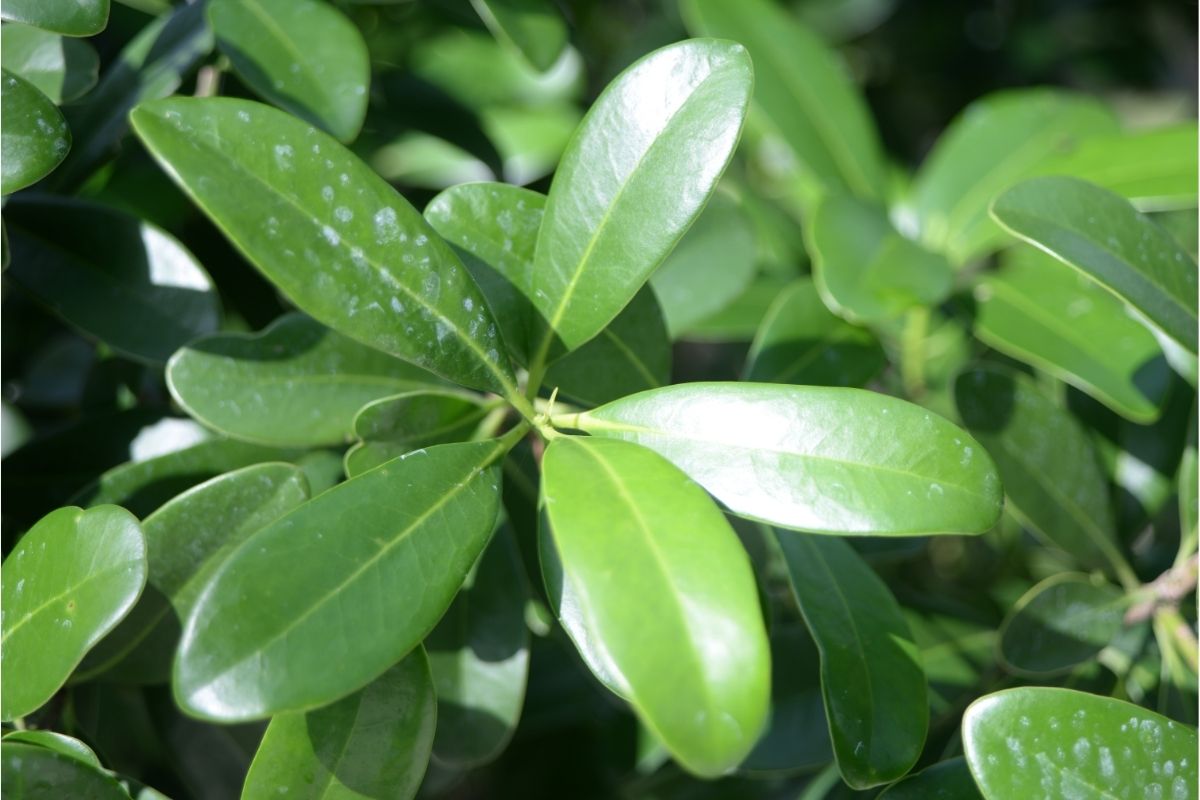The rubber plant originally comes from South America, but now they are grown all over the world in tropical climates. There is one big difference between a potted and planted rubber tree: the latter will grow much larger than its container size as it grows. Rubber plants are beautiful plants that make a delightful addition to any home. It is no wonder you are here to learn how to propagate these amazing indoor plants, if you have one you might as well have three after all. In this article, we are going to show you how to propagate a rubber tree. On top of that, we are going to cover some additional information you might find useful if you are caring for one of these wonderful plants.

So, without further ado, let us get started.
When Should You Propagate A Rubber Plant?
A rubber plant should be propagated in early spring or summer. The reason for this is that this is the time a rubber plant will enter its time of growth.
This is exactly what you want when you are trying to get a plant to develop a brand-new set of roots and leaves.
What Will You Need?
Before you can start propagating you will need to make sure that you have the necessary tools for the job. Below is a list of what you will need to propagate a rubber plant.
- Rubber Plant Cutting – You will, obviously, need a cutting from your mother plant. So, make sure to cut a six-inch stem from a healthy plant.
- Rooting Hormone – Rooting hormone will help your rubber plant cuttings to develop roots as well as helping the mother plant to recover from having branches removed.
- Secateurs or Pruners – You will need a pair of sharp pruners or secateurs, so you can make a nice clean cut from your mother plant. Also, make sure that they have been sterilized to avoid any bacteria infecting your mother plant or cutting.
- Plant Pot – You will need an appropriately sized plant pot where you can grow your new rubber plant.
- Soil – An appropriate soil is required. We recommend using a mix of garden soil and perlite to get the best results.
- Ziploc Bag – You will need a large Ziploc bag that will be able to fit your rubber plant and pot in it.
Related: How to Propagate String of Pearls: What You Should Know
How To Propagate – Step-By-Step
Now we can get to the fun stuff, below are a series of simple steps you can follow along with to propagate your very own rubber plant. So, let’s get started!
Step 1 – The first thing you are going to have to do is get a cutting. When you are choosing which stem you want to propagate, try to pick one that would benefit from being pruned.
For example, a branch that does not get a lot of sunlight would be a good candidate. It is important that you make sure your rubber tree cutting has healthy leaves and is not diseased.
Step 2 – Once you have found the branch you want to propagate you will need to make the cut. The best place to make your cut will be about halfway up the stem, ideally, you will have a leaf below the cut on the mother plant.
Cut at a slight angle and place your cutting aside. The mother plant could do with being dabbed with some rooting hormone to help it recover.
While you are doing this, be careful of the sap that will be dripping out of the plant. It can be a bit messy to clean.
Step 3 – Okay, back to the cutting, trim the cutting so that you have a six-inch stem with leaves. If there are any leaves lower down make sure to remove them.
Your cutting should have between two and four leaves on it and two to three inches of the stem that has no leaves.
Step 4 – Now that you have a perfectly pruned cutting you should dab the end in a rooting hormone to help encourage growth.
Next, place the cutting in a plant pot that is filled with moist soil and make sure that it is secure before moving on to the next step.
Step 5 – Your next job is to create a good environment for your newly propagated rubber plant. If you have a greenhouse, that would be an ideal place for this plant to start its life.
But for those of you that do not have a greenhouse handy, you can use a simple plastic bag. Using a ziplock bag, place your plant inside and close the bag about 90 percent of the way.
But before you close the bag try to make sure that the leaves are not touching the plastic. You can use chopsticks or toothpicks to give your baby rubber plant the space it needs.
Now all you need to do is place your plant in a nice warm and sunny spot and give it a good helping of water.
Step 6 – Rubber plants can take quite a while to start growing new leaves and develop roots. So, keep the soil moist and make sure that it gets plenty of sunlight.
After about a month you can take your baby rubber plant out of the plastic bag and at about the same time your plant should start developing roots.
After six months of patient waiting your rubber plant should have new leaves and a well-developed root system. Now it is all up to you to take care of your new rubber plant.
Related: How To Propagate String Of Dolphins: Things You Should Know
How To Care For Rubber Plant?
Let us look at a few things you need to know about caring for your rubber plant. From watering to sunlight, we have the basics right here for you to peruse.

Watering
Your rubber plant will likely need water at least every one to two weeks. This will be dependent on when the soil is dry as this plant needs to have the soil dry out between watering.
So, depending on the climate you live in and the time of year, try to water your plant once every one or two weeks while allowing the soil to dry out.
Soil
Rubber plants like soil that is well-draining and soil that is well-aerated. The best mix would be something that has peat, pine bark, and coarse sand or perlite in it.
Sunlight
Rubber plants like bright but indirect light. It is recommended that a rubber plant is placed by a south-facing window with curtains that are sheer, this is so that it can be bright but filtered light.
The ideal conditions for a rubber plant will include a nice warm spot with good indirect light.
Related: How To Propagate Polka Dot Plant: Things You Need To Know
Frequently Asked Questions
Below we have answered some of the most frequently asked questions concerning rubber plants.
How Long Does It Take To Propagate A Rubber Plant?
A rubber plant or rubber tree should start developing roots after about two to three weeks. This will, of course, depend on whether the plant is receiving all the optimal conditions it needs to thrive.
Can I Cut The Top Off My Rubber Plant?
These plants do not need to be pruned other than when you are required to remove leaves that are dying. If you want to shape your rubber plant you should avoid cutting the top of the plant.
This is so that you do not stunt your rubber plant and reduce the likelihood of it reaching the height you want it.
Should I Cut Back On Fertilizer After I Propagate?
You shouldn’t worry about doing this unless it has been suggested to you by someone who knows more about rubber trees than you do.
Typically, fertilizers aren’t applied directly to the root system of rubber plants as they would be in the case of cut flowers.
They can also cause problems if applied too early as they may promote growth at the expense of root mass. The best time to apply fertilizer is at the beginning of spring before planting out.
What Is An Indoor Rubber Plant?
Indoor rubber plants are those which are not grown outside year-round and instead grow indoors where they receive only light from artificial lights.
These plants come in many shapes and sizes but typically have leafless stems.
Why Do Rubber Plants Grow So Tall?
When growing rubber trees from seed the first thing that happens is they begin to produce thick long taproots which eventually take them to water-rich areas such as soil with high levels of nutrients or places where there is stagnant moisture.
A mature rubber tree will reach heights over 10 ft tall.
Are There Different Types Of Rubber Trees?
There are actually five species of rubber tree in the world. Two of these are native to the Philippines, one is found in China, India, Indonesia, and Malaysia and another exists in Brazil.
All except perhaps the Filipino variety are non-flowering plants.
Do Rubber Plants Regrow Leaves?
Rubber plants do not actually regrow leaves from the stems lower down, they prefer to produce leaves only at the top of the plant.
Final Thoughts
That is all for this article, we hope that you learned everything you need to know about propagating and caring for rubber plants.
WE hope that you are able to successfully propagate one of these beautiful plants in the near future.
Just remember that you might not always be successful, but with a little trial by fire, you should have the process down and be well on your way to creating brand new rubber plants all on your own.
Good luck and farewell for now!
Editor’s Recommendations
How To Propagate And Care For Prayer Plants | A Comprehensive Guide







